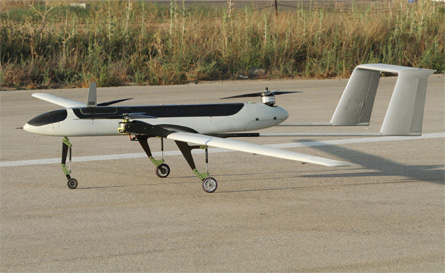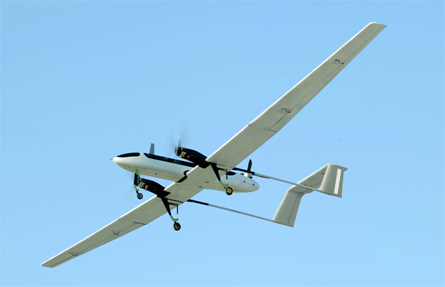Israel Aerospace Industries' Panther/K-80 tiltrotor unmanned air vehicle is being evaluated by special forces from other countries, the company has revealed.
The new design will be displayed at Israel's Latrun land forces conference from 5-7 October and also at the Association of the United States Army's 2010 annual meeting and exposition in Washington DC from 25-27 October.
Officers from some potential clients are expected in Israel this week to see the new UAV.
 |
|---|
© Israel Aerospace Industries |
The Panther uses an automatic flight control system to manage the transition between its hovering take-off phase to forward flight and back before landing.
Take-offs and landings are performed automatically following a click of the operator console, eliminating the need for an external pilot.
The UAV has a take-off weight of 65kg (143lb), and can loiter for about 6h at an altitude up to 10,000ft (3,050m). Its operating radius is more than 32nm (60km).
Power comes from what IAI describes as three "ultra-quiet" electric motors. The air vehicle carries IAI's Mini-POP electro-optical/infrared sensor - a stabilised camera with a laser rangefinder, pointer or laser designator.
Meanwhile, IAI is also poised to unveil a scaled-down version named the Mini Panther.
With a 12kg take-off weight, the smaller system can loiter for roughly 2h and carries a Micro-POP sensor.
The portable Mini Panther system includes two air vehicles and a command and control unit carried in backpacks by two soldiers.
Each of the company's larger Panther systems comprises three UAVs and a two-person control station using identical consoles. The equipment is installed on a midsize ground vehicle, which also carries a ground datalink, support equipment and spare parts to support tactical-level operations.
However, both UAVs can be controlled by only one operator if required.
 |
|---|
© Israel Aerospace Industries |
Prototypes of the Panther platform have undergone successful flight tests and the type will be operational by 2011, IAI says.
Source: Flight International
















